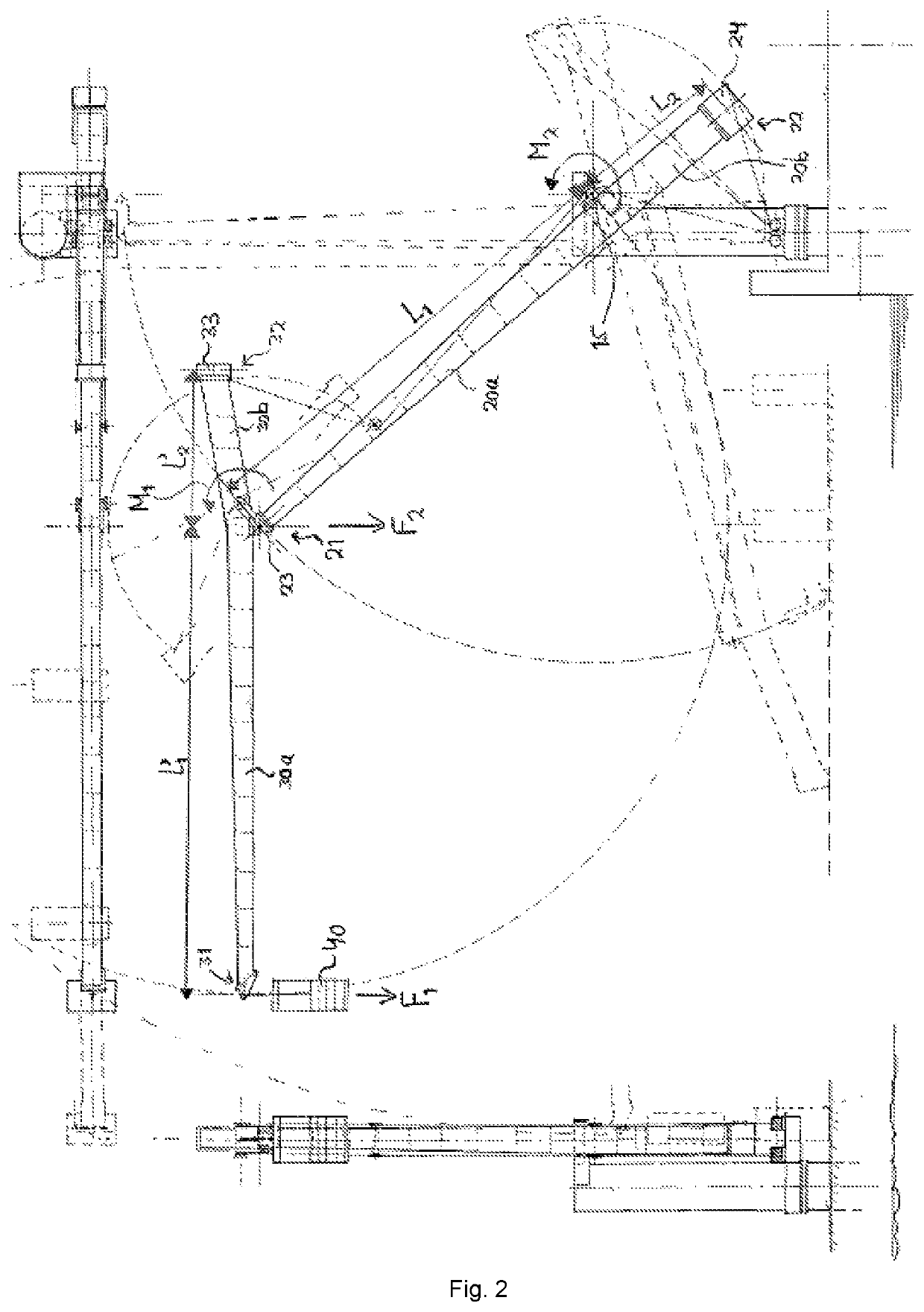System to transfer people and/or cargo during offshore operations
a technology for offshore operations and people, applied in the direction of load-engaging elements, ship accessories, vessel parts, etc., can solve the problems of large and heavy hydraulic actuator systems that are also low energy efficiency, relative movements cannot be fully compensated by the actuator system, and the weight is too high, so as to reduce the weight and improve the performance of the entire system. , the effect of less sensitive to wind forces
- Summary
- Abstract
- Description
- Claims
- Application Information
AI Technical Summary
Benefits of technology
Problems solved by technology
Method used
Image
Examples
Embodiment Construction
[0085]FIG. 1 depicts a system 1 for transferring people and / or cargo during offshore operations according to an embodiment of the invention. Offshore operations may include the transfer of people and / or cargo from a vessel 2 to a fixed construction 3, e.g. a platform or other fixed offshore installation, and / or vice versa. However, offshore operations may also include transfer of people and / or cargo between two vessels, and rescue or recovery operations to retrieve people and / or cargo from the water. Hence, system 1 is preferably used in cases in which there are undesired relative movements between two objects preventing an easy transfer of people and / or cargo.
[0086]In this embodiment, the system is mounted on a deck 4 of the vessel 2, but alternatively, the system 1 could have been mounted on the fixed construction 3.
[0087]The system 1 comprises a base 10, a support arm 20, a boom 30, a load support element 40, a measurement system 50, an actuator system, and a control system 70.
[0...
PUM
 Login to View More
Login to View More Abstract
Description
Claims
Application Information
 Login to View More
Login to View More - R&D
- Intellectual Property
- Life Sciences
- Materials
- Tech Scout
- Unparalleled Data Quality
- Higher Quality Content
- 60% Fewer Hallucinations
Browse by: Latest US Patents, China's latest patents, Technical Efficacy Thesaurus, Application Domain, Technology Topic, Popular Technical Reports.
© 2025 PatSnap. All rights reserved.Legal|Privacy policy|Modern Slavery Act Transparency Statement|Sitemap|About US| Contact US: help@patsnap.com


